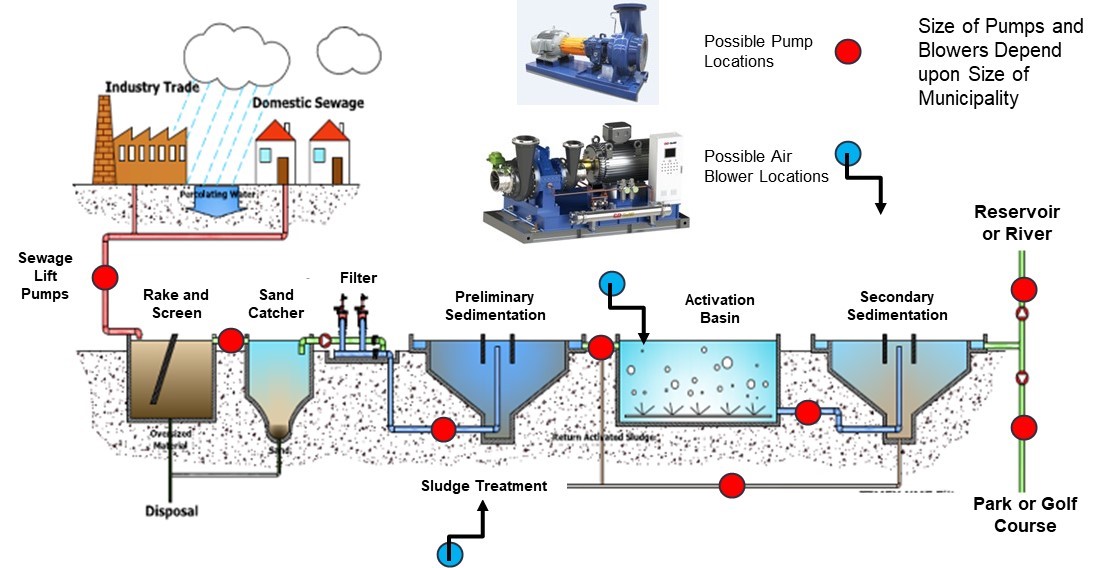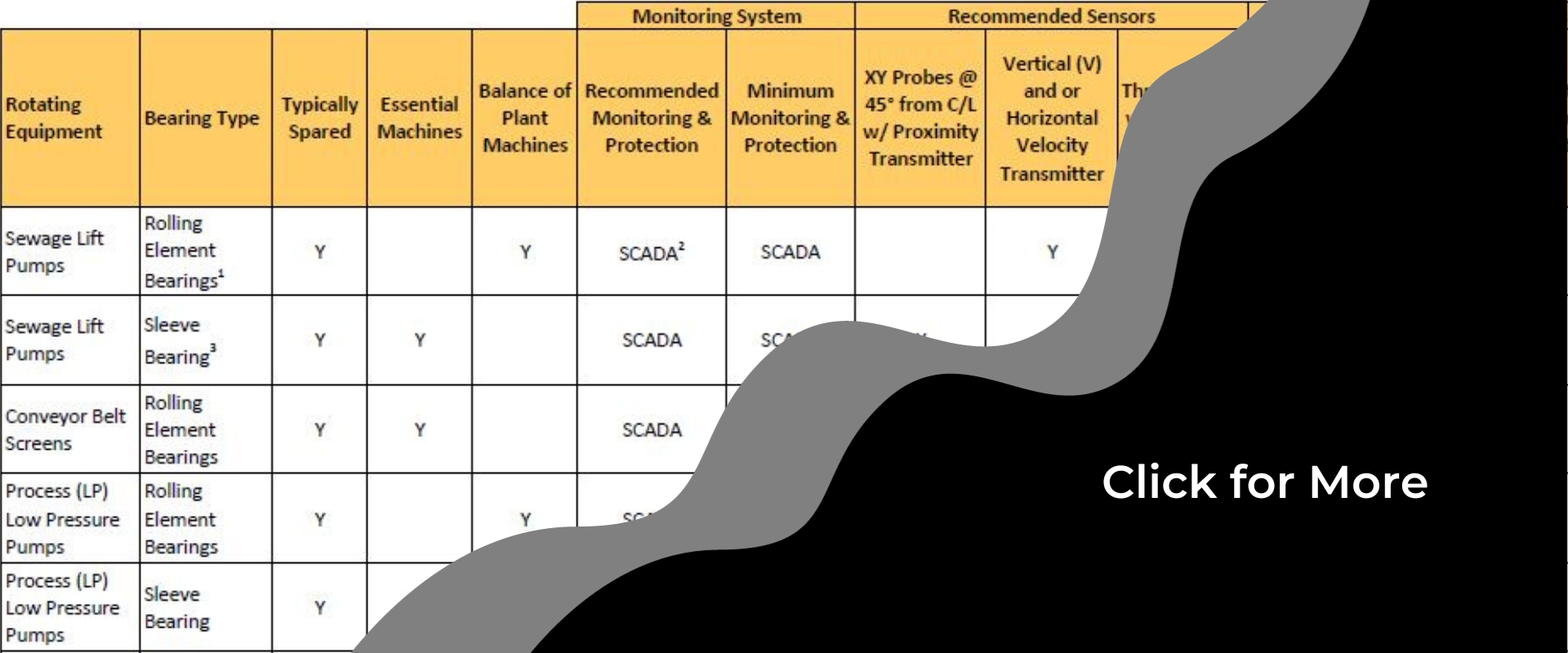Wastewater Treatment Plants
Wastewater Treatment Plant Overview
Wastewater treatment plants clean sewage and water so that they can be returned to the environment. These plants remove solids and pollutants, break down organic matter and restore the oxygen content of treated water. They achieve these results through four sets of operations: preliminary, primary, secondary and sludge treatments all of which can involve motor driven pumps and blowers. The size of the of the pumps is determined by the flow volume and the pressure head necessary to deliver the wastewater. The size of the of the air blowers are determined by the flow volume and the amount of oxygen needed in the wastewater treatment process. The bearings for the pumps and blowers are either going to be Rolling Element Bearings or Fluid Film Bearings depending upon their size. Large pumps and blowers, over 1 megawatt, usually have Fluid Film Bearings.

Figure – Typical Wastewater Treatment Plant
Normally, a network of sewers connected to homes, commercial buildings, schools and street grates delivers wastewater and solids to a treatment plant’s collection tanks and basins in a never-ending flow. In many locations, due to elevation differences within a municipality, lift pumps are used to get the sewage where it needs to go. The first phase is the pretreatment phase where wastewater plants remove the large debris. A set of bar screens rakes away large items such as tree limbs, garbage, leaves, cans, rags, plastic bottles, diapers and other waste materials. In many plants, equalization basins and grit chambers of various types regulate the rate of water inflow so that stones, sand and glass settle out. The basins hold sewage until it is ready for treatment and handle overflows due to heavy rains. Some plants skim grease and fats off the surface of the water during pretreatment.
After pretreatment, the wastewater collects in primary sedimentation clarifiers which are large basins and sedimentation tanks. Gravity allows smaller particles to settle out. Mechanically driven scrapers collect solid matter and direct it to hoppers connected to the sludge treatment equipment. If the plant didn’t remove grease and oil during pretreatment, it does so in this phase using surface skimmers.
In the next phase called secondary treatment, plants aerate and agitate the wastewater before it flows to the secondary sedimentation basins adding beneficial microorganisms to break down organic matter into sludge. If not gravity fed, or to increase flow, pumps may be used to transfer water from one basin to the next. Blowers are used to add air / oxygen to the process to increase the biological activity and breakdown or digest the biological contaminants in the wastewater. For vibration monitoring recommendations, see the pictured tables. The water from the secondary treatment is returned to the environment usually through a river, lake, and or park or golf course watering. If the reclaimed water is going to be consumed by people or animals it is put through a Water Treatment process, as described above, called Tertiary Treatment.
Plants also employ a number of alternative strategies to break down sludge. For example, plants can culture a mass of microbes and pass the waste material over biofilm (a film of microorganisms that aid in the digestion of biological contaminants). Other plants mix the biomass with waste material creating activated sludge that can be recycled for reuse. Air blowers can be used in the sludge process to increase the biological breakdown activity. The resulting biological floc removes carbon and nitrogen from organic wastes.
Tables - Wastewater Treatment Rotating Machine Monitoring Recommendations
Water Treatment Plants treat water to make it safe for human consumption and other uses.
Pumps play a vital role in vibration monitoring in water and wastewater treatment plants.
Download our Wastewater Treatment Whitepaper Download our Wastewater Treatment Brochure


